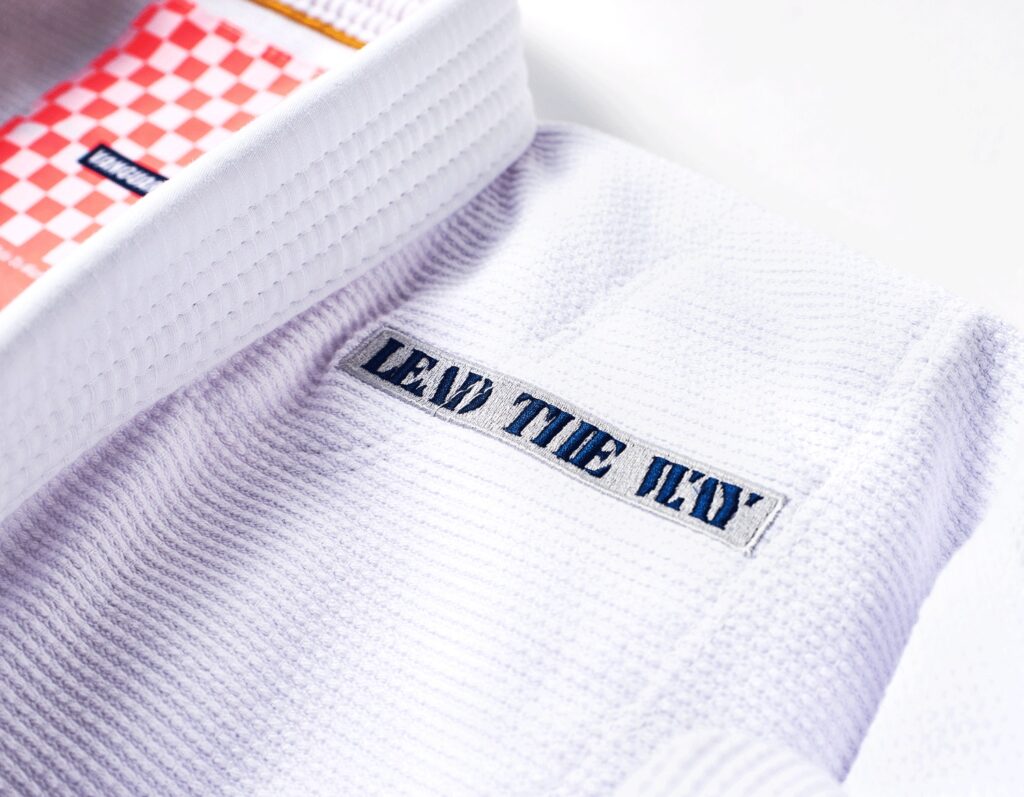Guide
While browsing this website, you will notice the tremendous diversity of BJJ kimonos: variations in quality, fabric types, weaves, colors and cuts.
Here is a handy guide to help you navigate through the options and find your way.
Fabrics
The composition of BJJ Gis primarily consists of cotton, either 100% or as a blend where cotton remains the predominant material.
The collar of the Gi is typically crafted with vulcanized rubber, which is thick, robust, and flexible to meet the demands of Jiu-Jitsu. This particular type of rubber surpasses regular rubber in strength, ensuring its longevity even during intense and rigorous training sessions. The use of vulcanized rubber allows the Gi collar to withstand the test of time and maintain its structural integrity.
Fabric selection plays a crucial role in understanding the characteristics of a gi. Knowing the type of fabric used provides valuable insights into the gi’s quality and performance. When it comes to the gi jacket, one aspect commonly mentioned is the GSM (Grams per Square Meter), which determines the fabric’s weight. Generally, the GSM serves as a reliable indicator of the gi’s weight category. A lower GSM signifies a lighter gi.
Weaves
The term “weave” refers to the specific pattern and construction technique used in the fabric of the gi. It determines the texture, durability, and overall feel of the kimono. Various weaves are employed in the production of BJJ Gis, each offering unique characteristics.

Single weave: This weave is characterized by a lighter and more flexible fabric. It is often preferred by practitioners who prioritize mobility and agility during training or competition. While it may be more lightweight, it still maintains adequate durability for regular use.
Double Weave: Double weave Gis are constructed with a thicker and denser fabric, providing enhanced durability and resistance to wear and tear. They are generally heavier than single weave Gis, offering additional reinforcement in high-stress areas. The increased thickness of the fabric can provide an advantage in grip fighting scenarios.
Gold weave: Gold weave Gis strike a balance between the characteristics of single and double weave Gis. They offer a blend of flexibility, durability, and moderate weight. This type of weave is often favored by practitioners who desire a versatile gi suitable for both training and competitions.
Pearl weave: Pearl weave Gis feature a textured, lightweight fabric that is known for its strength and breathability. The distinct texture of the fabric helps to minimize the opponent’s grip, making it a popular choice among BJJ practitioners. Pearl weave Gis are typically comfortable to wear and provide excellent moisture-wicking properties.
Rip Stop: Lightweight fabric known for its strength and resistance to tearing. It features a grid-like pattern with reinforced threads, making it durable and suitable for high-stress areas of the kimono such as the collar and cuffs. Ripstop fabric provides added longevity and performance to the gi during intense training sessions and competitions.
Other weave: There are many other weave variations like honeycomb weave, diamond weave…
Also some brands are now making their own weave. Whether for increased durability, comfort, or to achieve the lightest possible gi.
For example :
– IceWeave weave by War Tribe (cooling technology)
– Aeroweave by Gold (very light)
– Nano Pearl weave, Dragon weave by Origin BJJ
IBJJF requirements
If you are going to compete in an IBJJF tournament your gi must respect their regulation.
You can find all their “uniform requirement” HERE.
Their are also new rules that will go into effect following the 2024 Gi World Championships. You can find it HERE.
